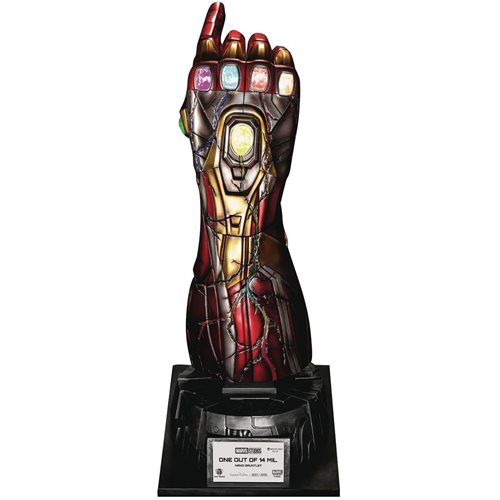Scorsese Prefers To Shoot In 3D From Now On!
 I love reading interviews like this! Martin Scorsese recently spoke with Deadline about HUGO and 3D in particular...
I love reading interviews like this! Martin Scorsese recently spoke with Deadline about HUGO and 3D in particular...
Here's the excerpt:
How long had you wanted to work in 3D?
SCORSESE: Since I saw my first 3D film back in 1953, House of Wax.
As you watched 3D develop through the years, it’s gone from something that jumps out at you to an immersive feel. How have you felt about the evolution?
SCORSESE: I have always been fascinated by it. Even before I saw 3D films, I remember getting a packet of 10 postcards that were stereoscopic from the late 19th century and looking at them through a little device. Then there’s the wonderful View-Master which had beautiful stereo images. Not only did it immerse you in the picture, but was like a story. I was fascinated by depth and I placed such moments carefully in Hugo. There are a number of things that do pop out at you, but we tried to have our cake and eat it too. Ideally you don’t realize the effect occurred. By the time it’s over, you’re onto something else. It was about placing you inside this boy’s world; the memory of a child. If you think back at your childhood, you think about where you grew up and if you ever go back there, it’s different. It has a different feel to it from what a child sees and perceives. I thought that would be amazing in 3D plus the fact that he lives in the walls of a train station with the mechanisms of the clocks – which always fascinated me. I remember a little glass ball of a clock that my grandfather had. He gave it to me. I was always fascinated because on the back of it, you can actually see magnified; the workings of a clock and since I was a child I was fascinated by that.
The technology certainly allowed you to see the inner workings of the clocks that are prevalent in the film.
SCORSESE: I go back to that old clock my grandfather had and I still have in the house now and I was fascinated by that. I’m not mechanically inclined but I’m fascinated by the mechanisms, and what they suggest. The stories that come out of them. The measurement of time itself. Movies being the illusion of motion, and then it is seen and it is an experience that disappears–into time. And in many cases, it has strong, profound, powerful reactions that can change your life. It certainly did mine.
There’s a wonderful moment where an audience watching a moving picture for the first time scatters as a train rushes through the camera. In your life and career, what film innovation compares to that?
SCORSESE: Well, two things really. It was the use of 3D back in ’53. Obviously, there are two or three films better than all the others – House of Wax, Phantom of the Rue Morgue and Hitchcock’s use of it in Dial M for Murder.
What was the other?
SCORSESE: I’m going back to theatrical experiences for this one. It was the first use of wide screen and the Cinemascope image on a wide screen at the New York Roxy theater which was really very thrilling. But the 3D I preferred, because in the first use of Cinemascope, it was rather static, but the 3D was not for some reason, particularly in House of Wax. I was always fascinated by these technical innovations and never thought I would get to make one. It was only 2 years ago that I was talking to some filmmakers in Cairo of all places, saying 3D is going to be amazing, but that it has to be in the script. I said, I’ll never get to make one but that’s the nature of where everything is going anyway. Ever since storytelling started, whether it was rock paintings or campfires, or the Shaman, it’s been about telling stories with motion, color, sound and depth, which leaves you what? Holograms.
And just two years after saying you wouldn’t make one, we’re talking about your first 3D film. What changed for you?
SCORSESE: Well, the story of Hugo. The climate of what Jim Cameron did with Avatar and 3D seemed right and the subject matter was just perfect for it. And it was time to take a chance with it.
How did you feel after watching Avatar?
SCORSESE: There was extraordinary visual storytelling in that picture. Cameron is a great innovator and leader in cinema. It made it (3D) very welcoming. If you suggest 3D, from that point on, it was taken seriously. But I just think 3D is open to any kind of storytelling. It shouldn’t be limited to fantasy or sci-fi. Look at (Werner) Herzog’s use of it (in Cave of Forgotten Dreams), Wim Wenders with Pina. It should be considered a serious narrative element and tool, especially when telling a story with depth as narrative.
Which of your movies might have most benefited from being shot in 3D?
SCORSESE: That’s an interesting question. Let’s see…Aviator, maybe? Maybe Taxi Driver… because of the intimidation of the main character , his presence is everywhere, a frightening kind of presence.
What was the hardest part about getting use to shooting with this format? There must have been a learning curve, figuring out how to frame shots to take advantage of that dimension.
SCORSESE: The high depth was very helpful and beautiful to work with. The rigs we had at the time were big, and that was problematic, though we were luckily shooting in a studio so we could keep it on a crane and move it around. Now, the rigs are smaller and more flexible. As I lined up each shot, we had to rethink how to tell a story with pictures. And so each shot was a separate surprise, a separate journey, even though I designed a lot of the 3D effects in the movie way before shooting started. I just didn’t want to waste the depth, even if it was a medium shot of a person speaking . This was something that [cinematographer Robert] Richardson, myself, my AD Chris Surgent, my second unit director Rob Legato. We all worked on it heavily, every day, adding to the frame, try things, making mistakes. Pull back, go forward, try something we weren’t supposed to do. This was the key.
Is it that much more challenging than shooting a 2D film?
SCORSESE: Eliminating the idea of the heavier equipment which is now getting smaller and flexible, I don’t think there’s very much of a difference. It shouldn’t frighten the filmmaker, it shouldn’t be an obstacle or an impediment. Break through it. Think differently about it. Don’t let people tell you what can and cannot be done. I shot the film in the way I’m used to shooting. It’s designed with editing, it’s a montage at times, but imagine somebody doing one long take in two hours in 3D, where the element of space really becomes part of the very fabric of the narrative, as we tried to accomplish here in our editing? It’s so unlimited. So yes, there are certain technical issues to deal with as you go ahead and work on a picture, but those are choices you make and you work it through. I wouldn’t be intimidated by it. You should really try and be bold.
Recently, 3D has been knocked as an excuse for studios to charge higher ticket prices. Now we’re seeing more filmmakers like you, Spielberg, Peter Jackson and Ridley Scott shooting in it. Would you prefer to shoot all your movies in 3D going forward?
SCORSESE: Quite honestly, I would. I don’t think there’s a subject matter that can’t absorb 3D; that can’t tolerate the addition of depth as a storytelling technique. We view everyday life with depth. I think certain subject matters aren’t meant for 3D but you have to go back to Technicolor; when it was used in 1935 with Becky Sharp. For about 10-15 years, Technicolor was relegated to musicals, comedies and westerns. It wasn’t intended for the serious genres, but now everything is in color. And so it’s just a different mindset. Granted once the technology advances and you can eliminates glasses that are hindrances to some moviegoers, so why not? It’s just a natural progression.
I honestly believe that when even filmmaking geniuses like Scorsese are challenged with something new, they experience something old and familiar to them - excitement. The excitement of filmmaking when they were younger. Of discovery. I think it brings the best out of ANYONE. Hearing Scorsese talk about making mistakes and trying again is not something you would expect out of a 2D production with him. But 3D? It must have been thrilling for him again.
Congratulations on HUGO Mr. Scorsese. Looking forward to your next S3D film!!


